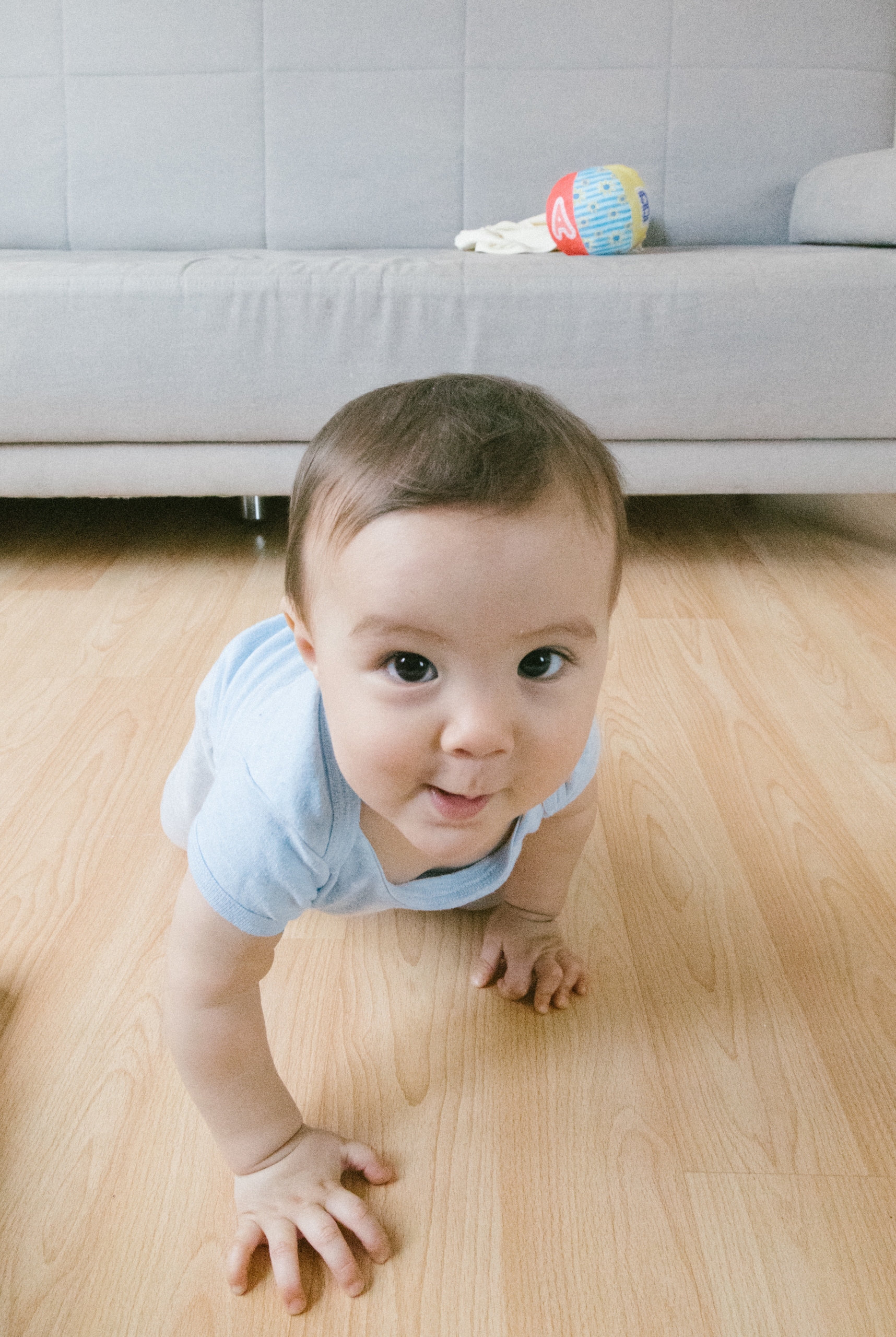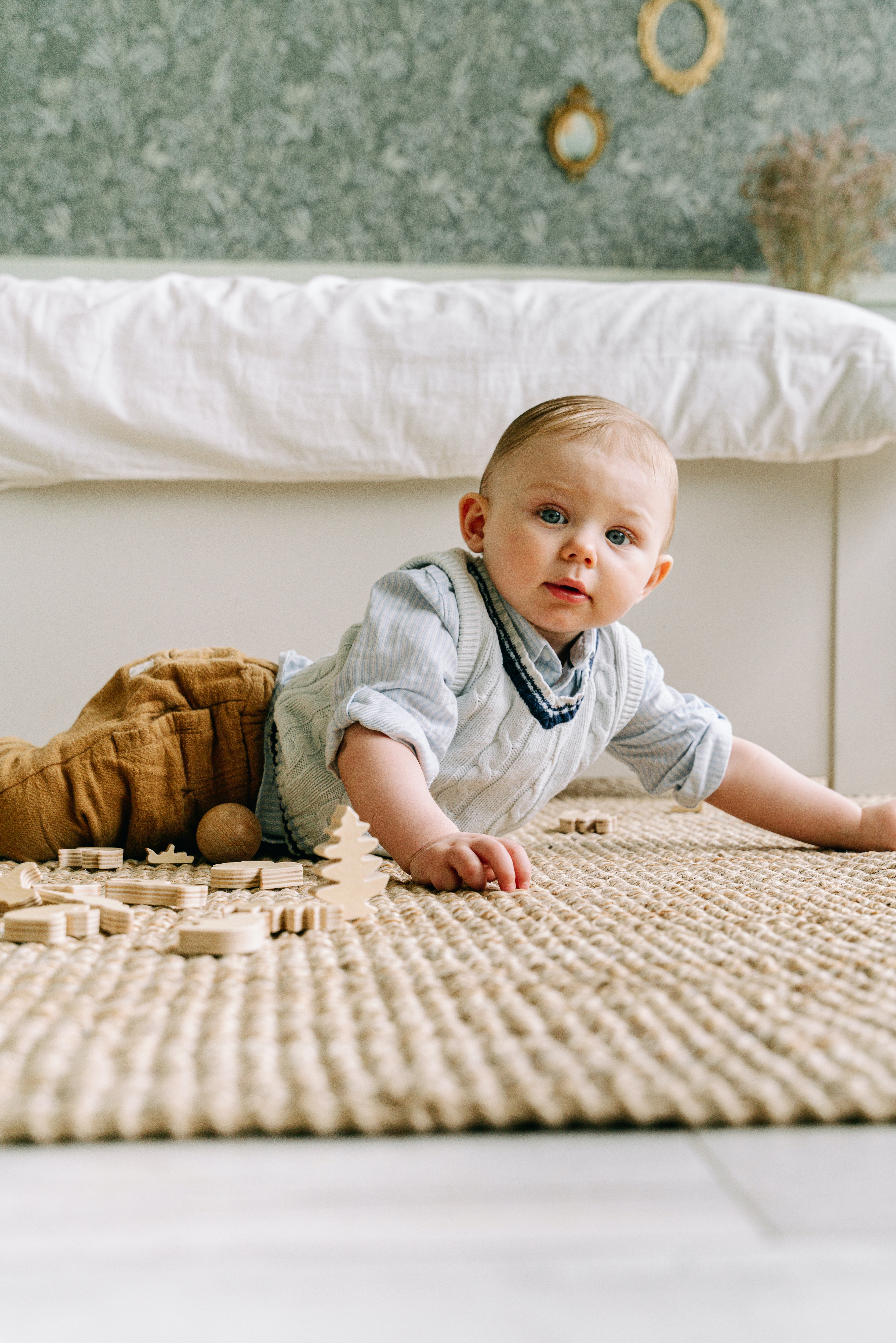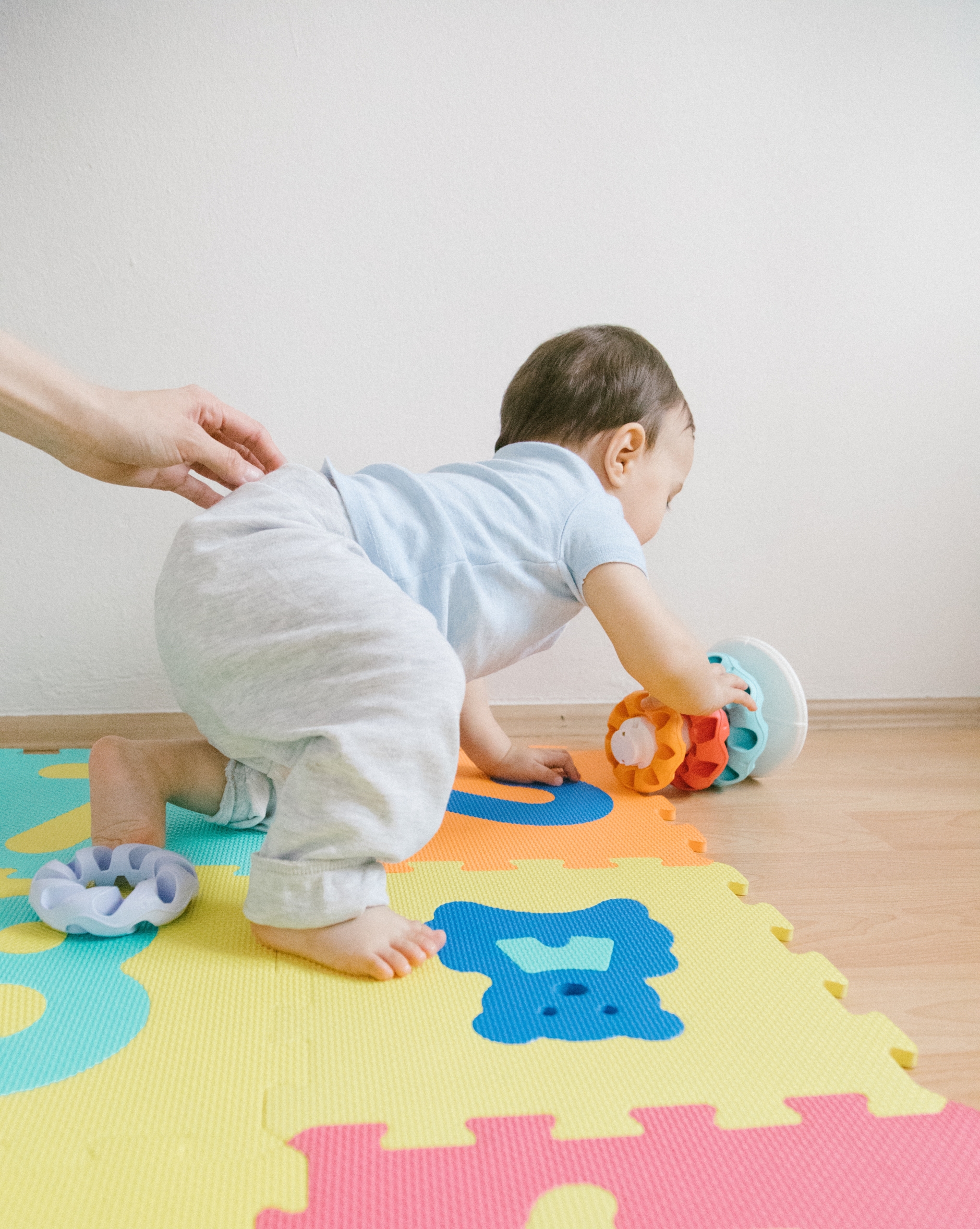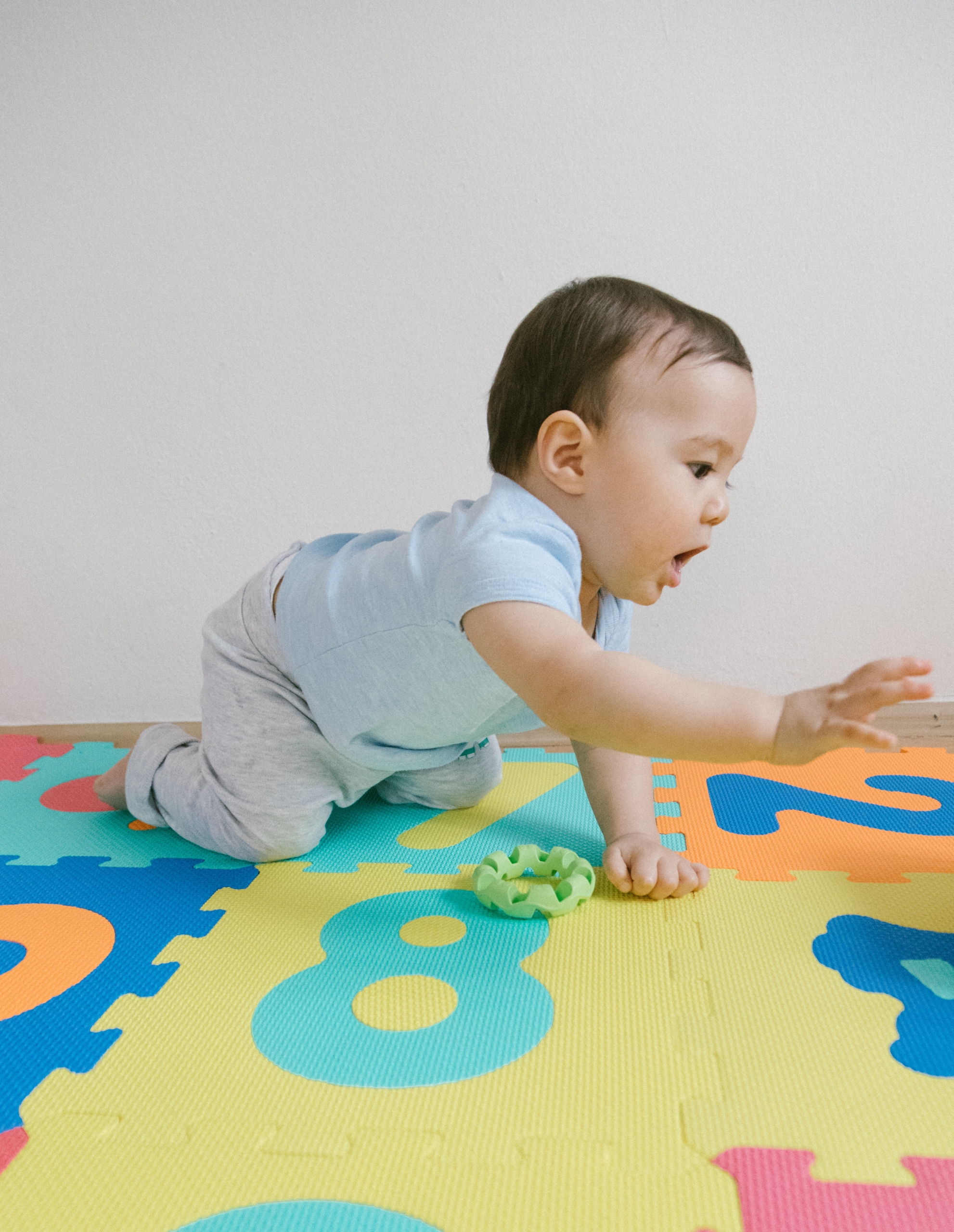

- Call 908 543 4390
- Email
- Dr.Joni Redlich PT,DPT



The CDC put out new milestone guidance for families and crawling was removed as a milestone. This decision led to a lot of uproar in the pediatric physical therapy and occupational therapy world and a lot of confusion for parents! Let’s have a conversation in this blog post about crawling and whether it is still important for us to consider.
First off, let’s consider the guidelines put out to parents and healthcare professionals. The developmental monitoring guidance, which is designed for parents to have a quick way to see if their child’s development is on track, no longer includes crawling as a milestone.
This does NOT change child development, developmental screening, or developmental evaluations. Developmental screenings are recommended to be done at 9, 18, and 30 months of age. Additionally, Autism Screening is recommended at 18 and 24 months of age. Any concerns about a child’s development will lead to a developmental evaluation, which looks more in depth at a child’s development.
Developmental screenings and evaluations will continue to include crawling as a milestone. Given that, we can include that crawling continues to be a milestone and one that is important to address.

In many ways crawling represents freedom. Crawling is usually the first time a baby can actively explore their environment, versus someone having to carry them from point A to point B. Babies also gain a sense of independence from their parent or caregiver, as they move away from them and then move back.
When babies bear weight on their arms, they develop shoulder stability and they develop the arches of the hands, which helps later on with handwriting and fine motor skills. Crawling also helps develop vision skills and gives babies important sensory feedback, from stimulating the vestibular system while moving in space, gives information to the touch receptors on the hands, legs and feet, and gives proprioceptive information from the joints and muscles. This sensory feedback helps babies develop spatial awareness, or the sense of where their body is in space.
Finally, crawling helps develop core stability and coordination, because you’re using your opposite arm and leg at the same time, along with moving in a rhythmic manner.
All of these components work together as the baby learns to control their bodies against gravity at this new level.

The most important thing parents that do to support their babies development is to have lots of floor time, without the use of supports, so that baby can explore.
Babies need to move against gravity, and see, by trial and error, when I reach for that toy, what happens? A lot of times they start moving by a happy accident, like they lean one way to get something and they roll over. If they don’t have those opportunities, those happy accidents can’t happen.
When the baby is on the floor, encourage them to move by putting toys slightly out of reach. As parents, having the patience to let them go through that trial and error process and not jump in can be so hard, and sometimes even I have to sit on my own hands.
The transitions babies do over and over again during play, moving from sitting to belly and back to sitting, from sitting to hands and knees to sitting again, is what gets their little bodies truly ready for crawling. They move in and out of positions, getting their core muscles primed to support them on hands and knees.

Many babies will crawl in a typical all fours pattern, but there are so many variations too. Some babies will first commando or army crawl before getting up on hands and knees. This is where we often see lots of different variations and asymmetries. Some babies will do lot of pulling with their arms and some will always push off with the same leg. I generally tell parents not to worry about funny looking army crawl patterns. It will work itself out when the babies are on hands and knees crawling and moving in a much more symmetrical and synchronized way.
Some babies will bear crawl, where the legs are kept straight. This often happens when the baby is avoiding hard floors! As long as you’re seeing lots of variety of movement patterns during play, this isn’t concerning.
Crab crawl: Baby moves with either one or both legs tucked under. This is another common variation. Its often due to asymmetries in the pelvis and hips, but it can also just be a normal variation.
Bottom scoot: Baby uses hands to push across the floor while sitting upright on their bottom. Some babies don’t go onto hands and knees at all and will get around on their bottoms. If baby is choosing this method of mobility, keep an eye out for how they are figuring out how to pull up to standing so that they are able to get to the next stages of development on the road to walking. My favorite activity to introduce to bottom scooters is climbing up the stairs- you can’t pull that off with a bottom scoot!
Crawling backwards: many babies will crawl backwards before figuring out how to crawl forwards; if you see your baby crawling backwards, just enjoy the process and watch them problem solve and figure out how to change directions; they’re almost there!

Babies will learn to crawl on hands and knees between 8-10 months of age. Like every milestone baby works towards, there are many small steps that add up to the big achievement of the milestone. If a baby is able to do all the steps up to crawling, such as moving from sitting to hands and knees and rocking on hands and knees, they’re on their way.
Some signs baby may need some help with their gross motor development:
At Kid PT we offer developmental screenings to local families who have questions or concerns about their children’s development. I tell parents that at that screening you will either get peace of mind that there aren’t any concerns or they’ll get recommendations as to how to help their child and support their development. Its a win-win!
To schedule a Developmental Screening, call/text us at 908-543-4390 or email info@kidpt.com.
What happens when your child is ill?
Have you ever thought you were going crazy when it came to your kids? Sure, we all get stressed out by the demands parenting requires of us whether they be mundane, daily happenings (“No you can’t have another cookie!”, “Stop teasing your brother!”) or extreme, unlikely circumstances (Hello pandemic-looking at you!)
But, what if there was something wrong with your child, (who also happens to have neurodevelopmental delays or another neurodivergent diagnosis) and no experts had any answers for you? What if you took your kiddo to all the “BEST” doctors out there and they either had no answers, their diagnosis conflicted with one another, or worst of all, they just didn’t believe your child had a problem?
Misdiagnosis happens.
I am here to tell you that it happens. And when it is your child who is struggling and suffering, it is exquisitely painful. You feel like you are living in a nightmare that you simply cannot wake from and that somehow, those around you are seeing a distorted view of reality. A 2019 article* states that, “the mindset that young children are rarely seriously ill is one of the main reasons that they are more likely to be misdiagnosed than adults are. That’s on top of all of the ways that approximately 10 percent of American adults are misdiagnosed every year. When doctors and nurses expect to see a healthy child with a common short-lived illness, they may miss the uncommon ones.”
The article goes on to list the main reasons for children receiving a diagnosis that’s wrong or delayed:
Experts may give you the brush off.
However, there are cases where a parent’s concerns are dismissed, as I was when my daughter presented with a long, puzzling, seemingly unrelated laundry list of symptoms that spanned years, nearly a decade by the time a diagnosis was finally rendered. During that time period, I was given advice from some well-meaning individuals who said things like:
Did any of this help my daughter get better or me find answers? That would be a resounding no. Oh, and by the way, that last piece of “advice” above was given to me, in front of my child, by a supposedly well-respected doctor. He dismissed all the hundreds of pages of tests, scans, medical records and prior diagnosis, didn’t help my daughter, and charged for it!
So what DO YOU DO? You don’t give up- you trust your gut! Parents know their children best and what their “normal” looks like, even if it doesn’t match the textbook image. Remember to believe in yourself and your ability to help your child. Make a bulleted list of every symptom, even if it does not seem totally related, and the date the symptom started. Research the heck out of your child’s symptoms and any test results you have, using the best and most trusted resources you can find. Become well acquainted with clinical research papers, societies for various branches of disease types ( think brain, stomach, nervous system, etc.) Join an online group for other parents who may be seeking answers for their child or who may have information to share.
The Society to Improve Diagnosis in Medicine says not to get overwhelmed by the risks of misdiagnosis. Rather, recognize there are a few key things to do, to assist in getting an accurate and (hopefully) prompt diagnosis. These tips also help if your child is in the middle of a diagnostic journey today.
In closing, you, as a parent, are the most trusted authority on your child. If you feel that something is wrong with your child and it is not getting resolved, don’t be afraid to speak up. Your child and your family deserve answers and the best possible care. Be brave and know that what your GUT is telling you, may be right. (If you have a question for Melanie (author/Kid PT Marketing) email her at info@kidpt.com)
*References
